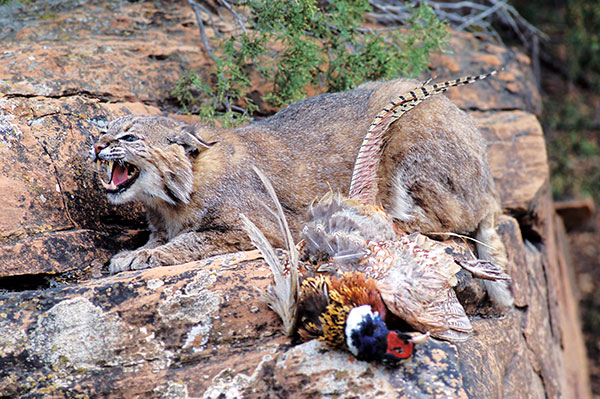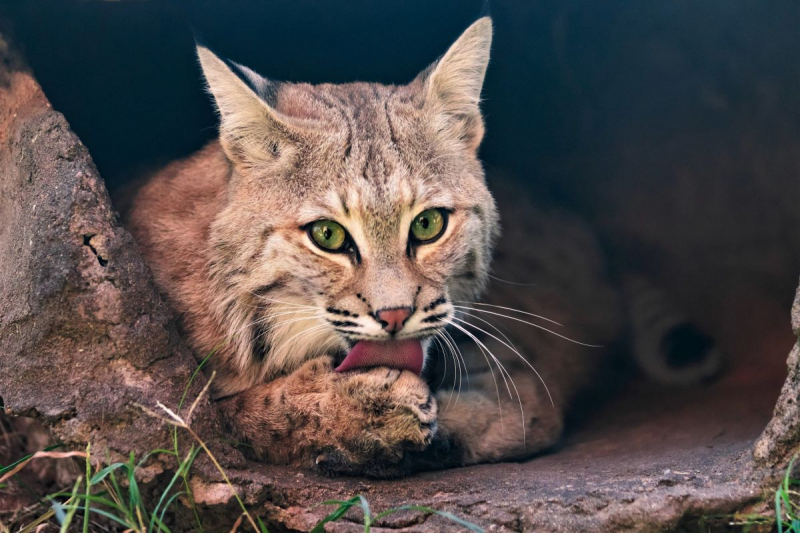Bobcats often attempt to cover unconsumed remains of kills
Bobcats are opportunistic predators that prey on a variety of prey, including domestic cats, small dogs, exotic birds, poultry, sheep, and goats, as well as occasionally calves. Domestic and wild turkeys can be easily killed by bobcats, mainly by climbing into their night roosts. In some regions, bobcats can reduce current populations or inhibit the effective introduction and establishment of wild turkeys.
Bobcat carcasses can frequently be distinguished from those of cougars, coyotes, or foxes. Adult deer or antelope often have their shoulders or backs scratched by bobcats. Bob-cats typically start eating the viscera from an opening immediately behind the ribs on large corpses. Sometimes the neck, shoulders, or hindquarters are where feeding begins. Bobcats and cougars leave clean-cut edges of tissue or bone, while coyotes leave ragged edges where they feed.
Bobcats, like cougars, often attempt to cover the unconsumed remains of killed prey by scratching leaves, dirt, or snow over them. Bobcats reach out about 15 inches (38 cm) when raking up debris to cover their kills, while cougars may reach out 24 inches (61 cm). When threatened by a bigger carnivore, these cats will usually head for the safety of the nearest tree. Climbing among the branches also affords bobcats the opportunity to dine on nesting birds every so often. The felines have also been known to pounce on unwary deer from overhanging tree limbs.








